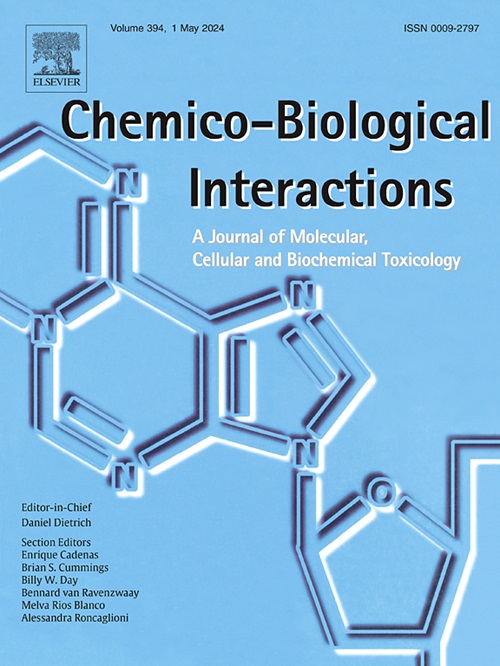Equol promotes osteogenic differentiation of hPDLSCs by inhibiting oxidative stress via IL1B/NF-κB/CXCL1 signaling axis
IF 4.7
2区 医学
Q1 BIOCHEMISTRY & MOLECULAR BIOLOGY
引用次数: 0
Abstract
Oxidative stress (OS) inhibits the osteogenic differentiation of human periodontal ligament stem cells (hPDLSCs). Equol (Eq), a phytoestrogen, exhibits notable antioxidant properties and potential for preventing osteoporosis. However, the research on the regulatory effects of Eq on stem cell osteogenesis remains limited. This investigation aimed to identify whether Eq could protect the osteogenic potential of hPDLSCs under H2O2-induced oxidative microenvironment. We employed a series of assays, including CCK-8, DCFH-DA, ALP staining, ARS, RT-qPCR, and Western Blotting, to assess the changes in cell viability, antioxidant capacity, and osteogenic potential following H2O2 and Eq treatments. Our findings indicated that low concentrations of Eq had no cytotoxic effects on hPDLSCs and promoted their proliferation. Eq pre-treatment (0.5 μmol/L) partially counteracted the inhibitory effect of H2O2, reduced the generation of reactive oxygen species, and increased glutathione levels, thereby inhibiting oxidative damage. Eq suppressed the H2O2-induced inhibition of osteogenic differentiation, presenting as restoring the alkaline phosphatase levels and calcium nodule formation, as well as by upregulating the expression of BMP2 and RUNX2. Furthermore, bioinformatics analysis in this study suggested that the IL1B/NF-κB/CXCL1 signaling pathway might be a key pathway for Eq's enhancement of osteogenic differentiation potential of hPDLSCs under OS conditions. The activation of this axis by H2O2, which Eq can alleviate, was confirmed by validation experiments. This study provides new insights into the potential therapeutic application of Eq in alveolar bone resorption and bone regeneration research.
Equol通过IL1B/NF-κB/CXCL1信号轴抑制氧化应激,促进hPDLSCs成骨分化
氧化应激(OS)抑制人牙周韧带干细胞(hPDLSCs)的成骨分化。雌马酚(Eq)是一种植物雌激素,具有显著的抗氧化特性和预防骨质疏松的潜力。然而,关于Eq对干细胞成骨的调控作用的研究仍然有限。本研究旨在探讨在h2o2诱导的氧化微环境下,Eq是否能够保护hPDLSCs的成骨潜能。我们采用CCK-8、DCFH-DA、ALP染色、ARS、RT-qPCR和Western Blotting等一系列检测方法来评估H2O2和Eq处理后细胞活力、抗氧化能力和成骨潜能的变化。我们的研究结果表明,低浓度的Eq对hPDLSCs没有细胞毒性作用,并且促进了它们的增殖。Eq预处理(0.5 μmol/L)部分抵消H2O2的抑制作用,减少活性氧的生成,提高谷胱甘肽水平,从而抑制氧化损伤。Eq抑制h2o2诱导的成骨分化,表现为恢复碱性磷酸酶水平和钙结节形成,上调BMP2和RUNX2的表达。此外,本研究的生物信息学分析提示,在OS条件下,IL1B/NF-κB/CXCL1信号通路可能是Eq增强hPDLSCs成骨分化潜能的关键通路。通过验证实验证实了H2O2对该轴的激活作用,Eq可以缓解H2O2对该轴的激活作用。本研究为Eq在牙槽骨吸收和骨再生研究中的潜在治疗应用提供了新的见解。
本文章由计算机程序翻译,如有差异,请以英文原文为准。
求助全文
约1分钟内获得全文
求助全文
来源期刊
CiteScore
7.70
自引率
3.90%
发文量
410
审稿时长
36 days
期刊介绍:
Chemico-Biological Interactions publishes research reports and review articles that examine the molecular, cellular, and/or biochemical basis of toxicologically relevant outcomes. Special emphasis is placed on toxicological mechanisms associated with interactions between chemicals and biological systems. Outcomes may include all traditional endpoints caused by synthetic or naturally occurring chemicals, both in vivo and in vitro. Endpoints of interest include, but are not limited to carcinogenesis, mutagenesis, respiratory toxicology, neurotoxicology, reproductive and developmental toxicology, and immunotoxicology.

 求助内容:
求助内容: 应助结果提醒方式:
应助结果提醒方式:


